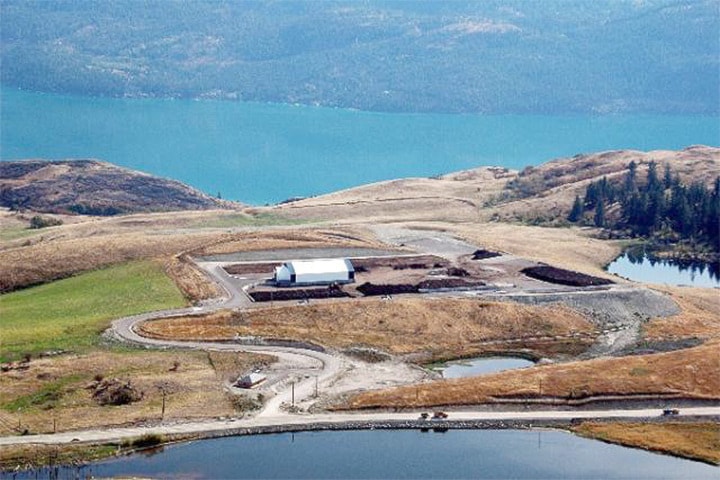An estimated 17,000 tonnes of organic material could be diverted from regional landfills with the creation of new composting facilities that could be in operation in as little as four years.
Building one or more composting sites was a key recommendation in the solid waste management plan adopted in 2011 by the Regional District of Okanagan-Similkameen.
The plan estimates organic material, such as biosolids, food and yard waste, accounts for 40 per cent of the approximately 66,000 tonnes of trash that go into regional landfills every year.
It also pegs the capital cost of a compost facility, which is expected to divert 65 per cent of organic material from landfills, at $33 million, although the lead planner stressed that number is “a worst-case scenario.”
RDOS solid waste management co-ordinator Cameron Baughen said the figure was presented for argument’s sake during public consultation on the plan and represents the cost of “a very capital-intensive, centralized facility.”
At this point, the RDOS has only identified nine potential sites for a facility and just this month issued a request for proposals from consultants who can assess those publicly owned properties and draw up a shortlist.
Seven of the proposed public sites are landfills operated by the regional district, plus at the wastewater treatment lagoon in Princeton and a rural plot west of Keremeos. Baughen said once a shortlist is drafted, the RDOS consultant can move on to more detailed studies to address such things as cost, infrastructure requirements and potential odour concerns.
“Everyone we’ve talked to, odour has been the issue,” he said, adding complex modelling can be done to predict what smells might travel where, and how they can be minimized.
“If a homeowner is being impacted by horrific smells, it’s not a good thing, and it’s we something need to avoid. We need to do our due diligence up front,” Baughen said.
Odour complaints have plagued a biosolids composting facility on the outskirts of Vernon that was built as a joint effort with Kelowna to handle organic matter from the communities’ sewage treatment plants.
In April, the two municipalities agreed to spend $425,000 for a new system to make more water available to the plant to help eliminate smells.
“It was originally felt through an environmental assessment that the technology that was proposed at the time would be sufficient, but as it turns out it was not,” explained Gordon Light, biosolids supervisor for the City of Kelowna.
Now, however, those issues “have been addressed and I believe we have a very well-run facility today,” said Light, who suggested people keep an open mind about composing facilities within the RDOS.
“The benefit is so much better than putting (organic waste) in a landfill or burying it and consuming valuable landfill space and creating methane gas,” he said.
The Kelowna-Vernon facility also produces OgoGrow fertilizer, which Light said generates annual revenue of nearly $500,000 that covers about a quarter of the site’s operating costs,
Baughen said the RDOS will also consider selling the end result of its composting efforts. He also noted the local government will be working with businesses and landowners to help put together proposals for privately owned compost facilities.
A decision on how to implement the competing strategy isn’t expected until 2015.
